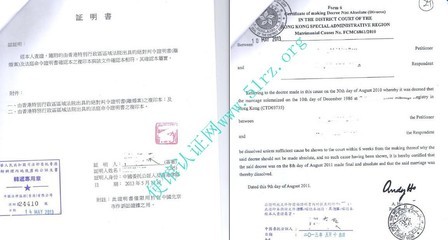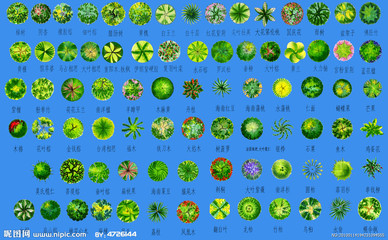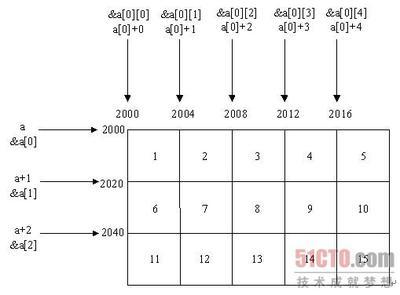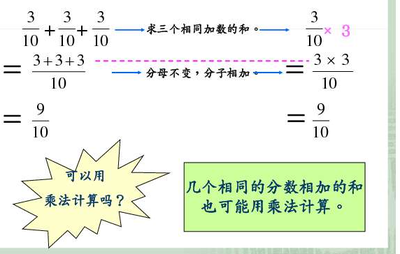注意 of前后的词
of短语前面是名词时 ,总的来说是对该名词进行修饰。但是由于 of前后名词、代词单复数和有无何种冠词等的不同 ,便影响了 of
介词 of的功能很多 ,用量也大 ,是英语中最常用的一个介词 ,它的各种用法和意义很难确定和分类。本文引入“瞻前顾后”法来解释of的用法与意义。所谓“瞻前”是说首先看 of前面的词是什么词类 ,所谓“顾后”是说of后的名词、代词或作用相当于名词的其他词类、词组或从句与 of一起构成的 of短语 ,在形式上和内容上与of前的词是什么关系或联系
,即是说 ,of后的词是怎样服务于
of前的词。这样 ,把意义、形式和功能结合在一起来学习 of的用法 ,有利于加深对 of的理解。本文主要讨论of短语前是名词、动词和形容词时 ,of的用法与意义。
1 of短语前面是名词
1. 1 表示所属关系(belonging to sb/ sth) of后接的物主代词或名词是所属主体 ,即 of前的人、物或事由它的主体来修饰,其具体意义有以下几种不同情况。
1. 1. 1 表示所有权。如 :that house of yours in the country你在乡下的那所房子。theproperty of J . C. Smith ,Esq.史密期先生的财产。
1. 1. 2 表示某人的权利或责任。如 :the role of the teacher教师的职责。theprivileges of the elite上层人物的特权。
1. 1. 3 表示附属关系。如 :the lid of the box箱子的盖。the courage of thegirls姑娘们的勇气。the love of a mother母亲的爱。
1. 1. 4 只表示某种确定的关系。如 :a friend of mine我的朋友。an aquintance of mywife’s我妻子的熟人。
1. 2 表示部分与总体的关系 (showing the relationship between part and thewhole of sth)
of后的名词多为复数或集合名词 ,也可以是表示整体的词组或从句 ,即of前的人物事由它的总体来修饰。不过还可以总体修饰总体。
1.2.1 of前是 some ,any ,few ,many ,much ,all ,both ,none ,either,neither等不定代词。如 :some of his opinions他的一些意见。few of myfamily我家很少人。all of them他们所有人。either of these这两台机器中的任何一台。
1. 2. 2 of前是基数词、分数等。这些基数词或分数不冠限定词 ,冠了限定词则为同位关系 (见后 1. 5)。如 :thethree of them他们三人 (都)。这是同位关系。three of them他们中的三个 two -thirds of thepeople present出席者的三分之二。
1. 2. 3 of前是 the +形容词的最高级。虽然 of后的名词是总体 ,但说话人强调的是那个“最”字 ,所以弱化了总体,因此一般宜顺译。如 :the strongest stomachs特强的胃口。the simplest ofreasons最简单的理由。of the sweetest of smiles最甜蜜的微笑。但若最高级在 of之后 ,因强调“最”字,则宜逆译。如 :the face of the most beautiful woman最美的女人脸。the day of thehappiest of my life我一生中最快乐的一天。注意这时 of前仍是部分 , of后仍是总体。
1. 2. 4 名词单数 +of +同一名词复数 ,这时把该名词推到了至高无上的地位。汉译应根据上下文灵活些。如 :song ofsongs最好的歌。heart of hearts心底深处。
1. 2. 5 名词单数 +of +all+同类名词复数 ,表示在同类人物事中进行强烈的对照,常常用来表达没有事先想到的人物事居然出现了。如:I’m surprise that you of all people thinkthat .我奇怪 ,在所有的人中 ,只有你想着那件事。A flat tyre today of all days —what badluck !偏偏今天车胎瘪了 —
真倒霉 !
1. 2. 6 of前是序数词 ,of后是月份 ,表示日期。如 :the first of May五月一日。
1. 3 表示动宾关系 (introducing the object of the action expressed bythe preceding verbal
1. 3. 1 of前为动词状名词。如 :writing of a book写书。search of knowledge求知。
1. 3. 2 在惯用型 in + noun +of ,make + noun +of ,take + noun +of等中。如:in fear of his enemy因害怕他的敌人。take notice of what he says注意他的说话。makefun of the poor boy取笑那可怜的男孩。
1. 4 表示主谓关系 (introducing the subject of the action exprsessed bythe preceding verbal noun) of前是动词状名词 ,of后的名词才是能发出 of前那个动词状名词所表示的动作,所以在逻辑上 of后那个名词是主语。如 :the resignation of a Cabinet内阁的辞职。theshooting of the hunter猎人的射击。
1. 5 表示同位关系 (introducing a phrase in apposition) of前的名词与of后的名词指的是同一人物事。如 :the city of Dongguan东莞市。at the age of 16十六岁那年。theques2 tion of when to leave何时离开的问题。
1. 6 表示两名词间的修饰关系 (indicating the description between twonouns) 利用 of的这一功能 ,可以使 of前的名词修饰 of后名词,达到形象化描述的目的。也可用作一般形容词似的描写。
1. 6. 1 of前的名词修饰 of后的名词 ,达到形象化的目的。这时 of前后的名词接近于同位 ,通常可以用 of前的名词加-like或相应的形容词代替。它的结构形式是 :a/ that/ this/ his/ her/ your等 +名词 +of+ (a)+单复数名词。如 :a palace of a house一所宫殿般的房
子。 an angel of a girl天仙般的姑娘。 a hell of a life地狱似的生活。
1. 6. 2 of短语相当于一个相应的形容词作后置修饰语。 of前的名词 ,有的可以用一个相应的形容词代替,但有的则没有相应的形容词。如 :a man of ability ( = an able man)能干的人。 a girl often十岁的姑娘。 products of foreign origin外国产品。
1. 7 功能类似 from或 out of (used a bit like from or out of)
1. 7. 1 表示出身的背境。如 :a woman of royal decent出身皇族的女人。
1. 7. 2 表示居住的地方。如 :the inhabitants of the area该地区的居民。
1. 7. 3 表示由某人创作的作品。所谓作品是指全部而言 ,故通常为复数并有定冠词。如 :the works ofShakespeare莎士比亚的著作。 the paintings of Picasso毕加索的画。
1. 7. 4 表示制作的原料。如 :a dress of silk丝织连衣裙。 a box of sandalwood檀木箱子。
1. 8 表示关于或描绘着某人某物 (concerning or depicting sb/ sth) 有关of前面那个名词所涉及的内容或描绘着什么人物 ,用 of后的名词来说明。而且用不定冠词 a (an)实指 of
前的可数名词个体 (individual) (比较前述 1. 7. 3)或需冠词复数。如: Tale of Two Cityν双城记。stories of crime and advanture犯罪与冒险的故事。
1. 9 表示涉及到的人物事 (in relation to ,concerning sb/ sth) of前那个名词的意义是of后那个名词的意义所涉及到的某一个方面。如 :the result of debate辩论的结果。 the times worthof apple值一元钱的苹果。 five minutes of fighting五分钟的战斗。 his family ofthree他的三口之家。
1. 10. 2 表示单位 (模糊的数量 )。如 :a group of girls一群姑娘。 a drop ofwater一滴水。 a bowl of rice一碗饭。 a flash of hope一线希望。
1. 10. 3 表示种类。如 a sort of man一种人。 a class of plant一种植物。
1. 11 表示空间或时间的距离 (showing distance in space or time) 如 :avillage of 5 miles north Leeds在利兹以北五英里的一个村庄。 within 100 yards ofthe station在该站一百码以内。另外 ,在美国还说 a quarter of eleven差一刻十一点。
1. 12 构成 much of a ,more of a ,less of a ,enough of a等词组(forming fixed expressions much of a ,more of a ,less of a ,enoughof a ,etc. ) 冠词 a后是名词 ,但在汉译时常被转变成形容词 ;of前的 much等是代词,但在汉译时常被转变为副词。这种结构形式常可达到形容词名词化 ,幽默 ,风趣 ,分寸准确等多项修辞目的。如 : He is toomuch of a coward to tell the truth.他太胆小 ,不敢讲真话。 I was enough of agood sport to give you a drink.我是挺够哥妹儿的人 ,请喝一杯。 It’s more of achallenge writing individual and original an2 swers写出独特而富有创见的答卷,可不是轻易办到的事。 You’re less of a fool than I thought你不是我想象的那么愚蠢。
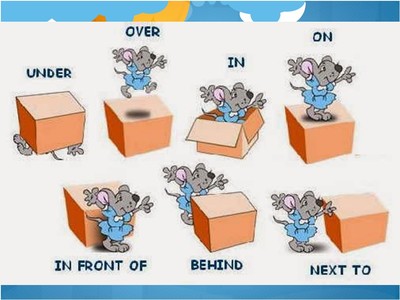
2 of前面是动词
of前面是动词有 6种情况 ,(1)前面是动词 be时 ,of短语作补足语 ; (2)of短语作状 语 ,修饰 of前面的动词 ;(3)与一些不及物动词搭配组成介词动词带宾语 ; (4)在一些动词后的用法相当于 from或 out of ;(5)在一些动词后的用法相当于 about ; (6)在少数动词后引导一个间接宾词。
2. 1 其前为动词 be时作补足语 (introducing a complement) 在意义上相当于一个形容词,有的可以一个形容词代替 ,有的却不能代替。如 :be of benefit ( = be beneficial)是有好处的。 beof ancient workmanship是古代手工艺的。 be of daily occurance是天天都会发生的。
2. 2 of短语作状语 ,指出某行为经常发生的时刻 (frequently happening at a specialtime) 如 :They used to visit me of a Sunday( =on Sundays).从前他们每星期日都来看我。 Often,of an evening( =in the evening) ,we’d hear thesirens.我们常常在傍晚听到警报声。在少数几个动词后指出动作的原因 (indicating a cause) .如 : Hisfather is dying of a liver disease他的父亲因肝病而生命垂危。 I did that ofneccesity我出于需要做了那事。
2. 3 搭配在不及物动词后构成介词动词
(forming prepositional verbs) 如 :What will be2 come of the girl ifher mother died ?要是她的母亲死了 ,这姑娘将会怎样 ? The dispute comes of atrifling matter.那场争论是因为一点小事情引起的。
2. 4 在一些动词后的用法相当于 from或 out of (being about the same use as fromor out of) 表示出自于 ,从 ..离开。
2. 4. 1 表示出身或出生于。如 :Napoleon came of a Gorsicanfamily拿破化出身于科西嘉人家庭。 He was born of wealthy parents他出生于有钱人家。
2. 4. 2 表示由何原料制作。如 This vast -house was constructed of maturePorland stone这座大房子是用加过工的波兰石建造的。 This ring is made of gold and yoursof silver.这只戒子是用黄金制造的 ,而你的是用白银制的。
2. 4. 3 表示发出的某种味道。如 This coat smells ofmothballs.这件衣服上有樟脑气味。
2. 4. 4 表示因而不再有 (某物、某种不愉快的感觉或遭遇等 )。注意 of后的名词是不再有的某物 ,某感觉或某种遭遇。如:An accident deprived him of his sight.一次事故使他失明了。 May I relieve youof your coat.我可以为你脱去上衣吗 ?
2. 5 在一些动词后的用法相当于 about (being about the same use as about),表示“有关” 如 :We will advise them of our change inplans.我们将把我们计划的改变通知他们。 We have noticed the police of ourloss我们己把损失情况通知了警方。
2. 6 在 ask ,expect ,demand ,require等表示 “,期望”等词义的动词后引导一个间接宾语(introducing an indirect object) 这类动词用作不及物动词而又要求接一个对象时 ,也用 of ,而不用to.如 :He required an apology of her.他要求她道歉。 She asked the samequestion of everyone in turn.她轮流对每个人提出同样的问题。 It is too much toexpect of you.这对你期望未免过高。
3 of前面是形容词
of短语前是形容词时,它的主要作用是作状语 ,对该形容词所描述的状态或性质加以补充或限制 ,使描述更明确 ,更具体。
3. 1 表示动宾关系 (introducing the subject of the action expressed bythe preceding verbal adjective) of前是动词状的形容词,of后接的是可能接受该项动作的名词。这样在逻辑上构成了动宾关系。如 He was always boastful ofhis“power”。他老是夸耀他的“权力”。 This is characteristic of situation oftoday.这体现了当今世界的特征。
3. 2 表示就某点而言 (in relation to ,concerning) of短语限制了描述的范围 .如 : Theold man is slow of speech and hard of hearing.这老人说话缓慢 ,耳有点聋 .Passions are hard of control.感情是难以控制的 . That statement is true ofhim.那种说法对他是适用的 .
3. 3 表示原因 (indicating a cause ) 如 :He felt ashamed of havingdone so little work.他只做了这一点儿工作而感到惭愧。
3. 4 在 It is/was+形容词句型中表示形容词描写的是谁 (used to who is being desribedby It is/was+adj. )如 : It was kind of you to offer.谢谢你的好意 . It wasrude of him to say that .真无礼 ,他说出那种话 . It was rash of him to moveso quickly.他真性急 ,行动得那么快.
 爱华网
爱华网